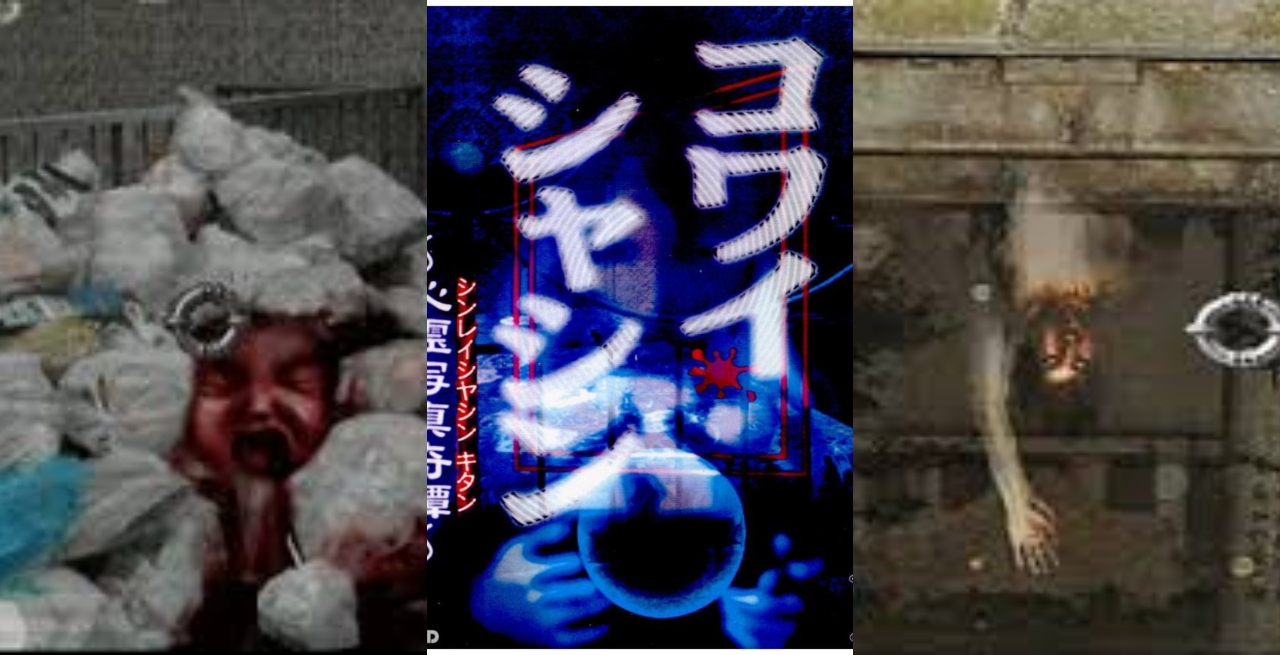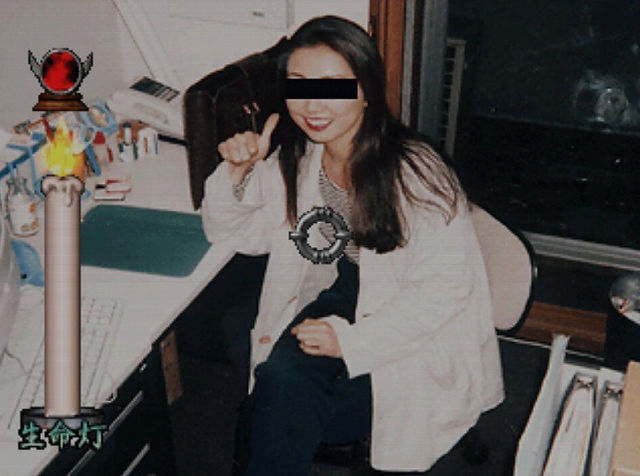
Hello, fellow weirdos! Today, we are delving into the Kowai Shashin, a purportedly cursed Japanese video game with a fascinating marketing strategy that incorporates urban legends and exploits the naivety of early 2000s consumers.
The team behind Kowai Shashin understood the need to differentiate their generic horror game in an oversaturated market. To achieve this, they drew inspiration from successful media projects like the Blair Witch Project and crafted a complete supernatural narrative around the game’s production and assets.
Was the curse real? No. Did they utilize real ghost pictures? Perhaps. Was it all worth it? Absolutely. Even today, instead of fading into obscurity, Kowai Shashin remains a topic of discussion within the video game community.
How did the urban legend of Kowai Shashin originate?

In the late 1990s, during the height of Japan’s spirit photography craze, a small development studio called Media Entertainment embarked on a unique project that eventually became known as Kowai Shashin. Released in 2002, this game, though modest by PS1 standards, aimed to captivate players’ imaginations with an intriguing concept and gameplay mechanics.
Kowai Shashin revolved around the concept of exorcising ghosts captured in authentic, real-life photographs. The gameplay itself was relatively straightforward: players had to follow a series of steps inspired by the ancient Japanese practice of kuji-kuri to perform a ritual and release the trapped spirits. The absence of elaborate storytelling or context did not detract from the game’s appeal. On the contrary, the inclusion of eerie photographs and digitized real locations heightened the unsettling atmosphere, which was a characteristic feature of horror games during that era.


However, it was not the gameplay or visuals that made Kowai Shashin infamous; it was the studio’s masterful marketing strategy and the creation of a gripping legend surrounding the game’s development. Even before the rise of creepypastas and viral marketing, Media Entertainment managed to captivate the audience’s attention by presenting Kowai Shashin as a “cursed” game.
According to the studio’s narrative, the photographs used in the game were sourced from a paranormal photographer with expertise in capturing images of the supernatural. These pictures were believed to carry negative energies that permeated the entire project, leading to a series of unfortunate events. Stories circulated of the game’s development team experiencing depressive episodes, seizures, accidents, and auditory hallucinations. Rumors even claimed that the game’s creator tragically took his own life, and the studio itself faced financial ruin due to the curse associated with the game. These tales quickly spread across online communities, gaining traction on platforms like 2chan.
However, the truth behind these rumors was far less supernatural. The studio’s marketing strategy was remarkably innovative for its time, blurring the lines between fiction and reality. No deaths occurred, and no jobs were lost due to the so-called curse. While it is possible that the development team experienced some stress and pressure in creating a successful game for an already struggling studio, the notion of paranormal forces at play was nothing more than an elaborate hoax. As for the development company, it faded into obscurity, but not because of the game’s curse. Some businesses simply fail to meet expectations, and there is nothing supernatural about it.
Why did the urban legend of Kowai Shashin resonate so much?
It is a combination of several factors, but let’s explore this further. Firstly, Japan is no stranger to contemporary urban legends surrounding objects. Recently, we discussed the Cursed Living Doll legend, in which a doll created for a play brought a series of tragedies to those who came into contact with it. The veracity of this entire ordeal is dubious, but the story gained enough attention to be featured on a Japanese TV program.
In fact, it is possible that this type of program influenced the Japanese public’s willingness to accept the Kowai Shashin narrative. In the 1990s and early 2000s, shows like “Anata no Shiranai Sekai” (あなたの知らない世界) on Nippon TV thrived by presenting reenactments of supernatural experiences shared by viewers. The subsequent discussions with psychics and supernatural investigators lent these stories a certain level of credibility. The logic behind it was that if something was approved to be aired on TV, then it must be real or significant enough to be discussed.
While this line of thinking may sound naive, it’s important to remember that this was the early 2000s, and television was still seen as the most reliable source of information. At the same time, while the internet was becoming more accessible, it had not yet reached the same level of instant communication we experience today. It took time for rumors to be debunked after they were posted.
Final Thoughts
While it might be disheartening to discover that the curse surrounding Kowai Shashin was a fabrication, we cannot deny the enduring power of the story. Even after many years, people continue to discuss and reminisce about this game. While the legend created by Media Entertainment would not be as effective in today’s era, it was perfectly timed back then to at least give it a try, and it worked. Thanks to Japan’s rich supernatural culture, prevailing TV trends, and the limited reach of the internet, Kowai Shashin’s team was able to plant the seeds that would lead the title to creepy posterity.
As you can see, although it may be considered an average video game, it continues to captivate the imagination of gamers and enthusiasts alike. This demonstrates the impact of effective marketing and the allure of a well-crafted tale.
More Japanese Deep Dives
Welcome, fellow weirdos, to another captivating exploration of Japanese culture. Prepare yourselves for a spine-chilling journey as we delve into a tale filled with possessed dolls, ancient curses, and the… Imagine yourself 12 years ago. You are an anime and manga fan who now has even more access to your favorite shows than ever before thanks to internet massification. Things… Hi fellow weirdos! This is Javi again, researching for you to bring you another interesting bit of Japanese media. We have previously discussed the term “Denpa,” which, according to Jisho.org,… When we picture samurai warriors, images of honor, discipline, and fierce sword battles come to mind. However, there is a hidden and often overlooked aspect of samurai culture that was…Japan Deep Dive: Iki Ningyo, The Cursed Living Doll
The Year Manga was Banned (But Not Really): A Deep-Dive Into Bill 156
Denpa Visual Novels – The Big Three Denpa Games
Samurai Fart Battles – The Lighter Side of History
Hi everyone! I am Javi from the distant land of Santiago, Chile. I grew up watching horror movies on VHS tapes and cable reruns thanks to my cousins. While they kinda moved on from the genre, I am here writing about it almost daily. When I am not doing that, I enjoy reading, drawing, and collecting cute plushies (you have to balance things out. Right?)



